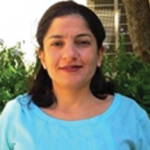ملخص
نستعين في هذه الورقة بالمسوحات التتابعية لسوق العمل الأردني 2010 و2016 لبحث التغيرات الأخيرة في نتائج الزواج والخصوبة بين الأردنيين، وكذلك بين اللاجئين السوريين في الأردن. تظهر البيانات الجديدة من مسح 2016 استمرارية كبيرة في ممارسات الزواج بين الأردنيين. شهد الرجال والنساء الأردنيون زيادات متواضعة في متوسط العمر عند الزواج الأول من سنة أو سنتين مقارنة بجماعات حديثة. والتعليم هو العامل الرئيسي المرتبط بالأعمار المتأخرة عند الزواج، وبالمثل بالنسبة للنساء، يوجد ارتباط بين التعليم وزيادة في الأعمار عند الولادة الأولى. وانخفضت تكلفة الزواج بالقيمة الحقيقية منذ عام 2010، ولذلك من غير المرجح أن تكون تكاليف الزواج مساهما رئيسيا في الاتجاهات الحديثة في سن الزواج. على الرغم من الزيادة الصغيرة نسبيًا في العمر عند الزواج الأول، فإن بيانات مسح سوق العمل الأردني في 2016 تشير إلى انخفاض الخصوبة المستأنف في الأردن بعد فترة طويلة من المماطلة، مع معدل خصوبة إجمالي 3.3 مولود لكل امرأة في عام 2016 مقارنة بـ 3.9 في عام 2010. وبالمقارنة بالسكان الأردنيون، شهد اللاجئون السوريون عموماً انتقالاً مبكراً للزواج ومعدل خصوبة إجمالية أعلى بلغ 4.4 في عام 2016. وهذا أقل من معدل خصوبة السكان اللاجئين قبل النزاع ووصولهم إلى الأردن، والذي بلغ 4.9 ولادة لكل أمرأه في عام 2009. أنماط الزواج والخصوبة لدى اللاجئين السوريين في الأردن تتفق مع هذا العدد الكبير من السكان الذين تم اختيارهم على أساس العوامل المرتبطة بعمر الزواج المبكر ومعدلات الخصوبة المرتفعة في سوريا. كان اللاجئون السوريون في الأردن أقل حظا في نتائج زواجهم، بما في ذلك انخفاض الإنفاق على الزواج وانخفاض معدلات الإقامة في الأسرة النواة. كما أن النساء اللواتي تزوجن قبل سن 18 عاماً، سواء من السوريات أو أردنيات، تعرضن أيضاً لنتائج أكثر سوءاً عند الزواج من أولئك الذين تزوجوا في سن أكبر، بما في ذلك الفجوات الأكبر في السن والتعليم مع أزواجهن

Authors
Maia Sieverding
Assistant Professor, Faculty of Health Sciences, American...

Authors
Nasma Berri
American University of Beirut

Authors
Sawsan Abdulrahim
Associate Professor, Department of Health Promotion and...


